by Ronda Birtha
For people who love corn, that love is almost a religious experience. From as far back as I can remember, I have loved corn in almost all its incarnations: on the cob, off the cob, in chowder, in breads, and popped on the stove, and even occasionally in the microwave. But there is one type of corn that I never liked: cream.
For whatever reason, my mother, a grits (girl raised in the south) and my father, a brits (boy raised in the south) would give us cream corn from a CAN! Both my parents are exceptional cooks, so for the life of me I could not understand why they – who made homemade banana puddings, meringue pies, cooked fresh veggies with our meals – would put cream corn on the stove and serve it to us. I couldn’t put into words then what I disliked about it, but I can now: metallic, overly sweet, and processed. All of the things that corn should not be.
Then one glorious day, I must have been in my mid-twenties, my mother made homemade cream corn. I mean she stripped those cobs bare and emptied those golden giblets into a huge saucepan with a little water, cream and salt and let it simmer for some time. But by this time I had already been thoroughly traumatized, so the ruse of making this homemade batch could not and would not sway me.
At the dinner table I watched my parents dip the substance into their bowls and on their plates. I noticed it was so milky and thick, like the corn out the can. The smell of corn was almost divine, and my resolve weakened. I don’t remember if my mother coaxed me to try it or not, but I scooped out a small portion, so small that it would not be taken as an offense if I didn’t eat it. So small that it would simply look like the remnants of a larger portion, a smearing at the bottom of the bowl. The first taste was all it took. I was sold and it led to me virtually emptying the saucepan, and in my heart I proclaimed that there was now no corn dish that I didn’t like. Unfortunately, to my recollection, my mother never made that dish again. Ever. (If she reads this post, she may publicly protest, but I stand by my recollection, as that was a dish I would never forget.)
So it would not be for some years, until I moved to far western North Carolina (leaving my parents, and the canned cream corn in Jersey), that I got to enjoy on rare occasions the delicious country-style cream corn again–once with my neighbor, Doris Gibby (who makes the great homemade Chicken and Dumplings – the subject for a future post), and more recently with my good friend Alice Blanton, who has elevated making cream-style corn to an art form.
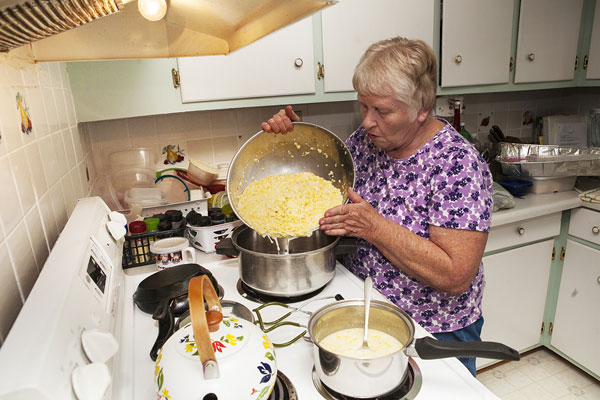
Alice, like many self-sufficient people in the mountains, raises a garden each year. And like many people, she raises a garden so bountiful that she shares it with others. Each year she packs my refrigerator with bags of corn on the cob or corn stripped off the cob. Every now and then she’ll have me over for a nice simple, yet exquisite southern meal that includes her cream corn. On this occasion, I asked her if I could document her process and she gladly obliged.
A person may wonder what the big deal with making cream-style corn is. You can Google and YouTube descriptions and videos on what to do – and for the most part, the basic instructions are the same. Cut the corn off the cob, boil it, add seasonings to taste. If the corn is to be stored for the winter so that sweet summer taste can be enjoyed year-round, have plastic baggies nearby to freeze the goods. Often the videos and recipes will vary with seasonings, but according to Alice, that is not where the “cream” rises to the top for distinguishing good cream corn from GREAT cream corn.
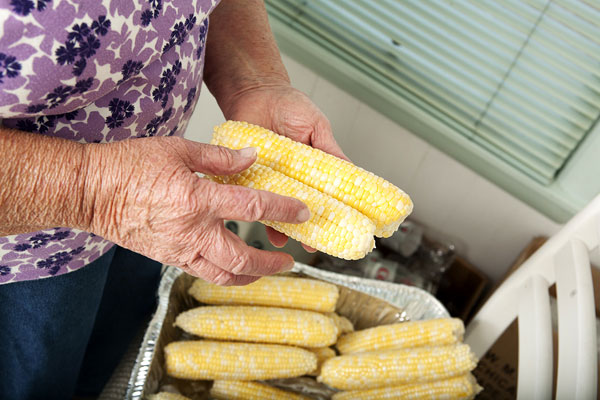
The special detail that is left out is a time-honored technique responsible for the hallmark sweet taste and creaminess of Alice Blanton’s cream corn. Rather than gouge the kernals with their juice trapped inside, Alice makes two “passes” with a special knife over them.

over a corn cob. The first pass is the most important as it unleashes the
creaminess that will be the hallmark of her cream-style corn.
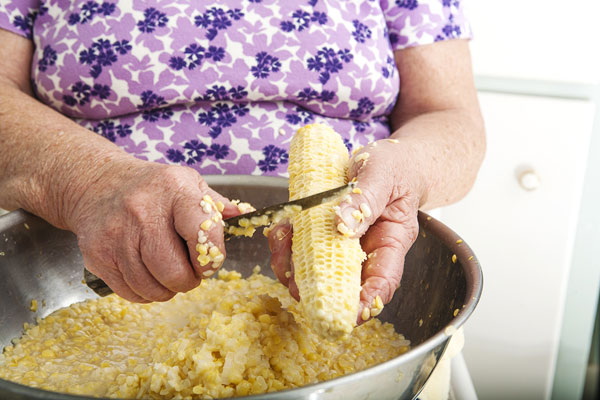
The first step, the most crucial, is to barely shave the tips of the corn from end to end. Then, the second pass clears the kernels from the cob.
Like any craft, there are the right tools for the job. In this case, it is obvious that one must start with quality corn. Alice has raised and eaten a lot of varieties in her years, but as of late, has found the peaches and cream corn (particularly from River’s Edge Farm in Murphy, NC) to be absolutely ideal.
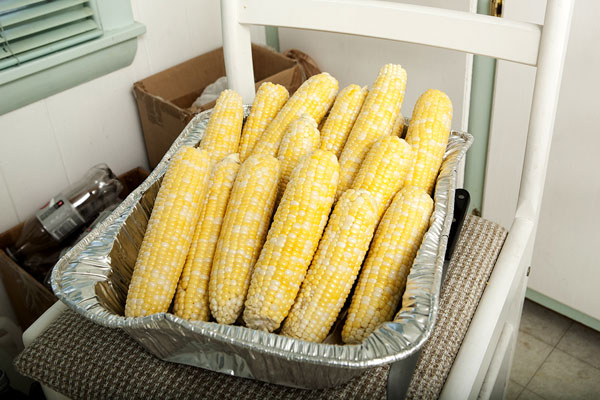

The second tool is a knife. And not just any knife.
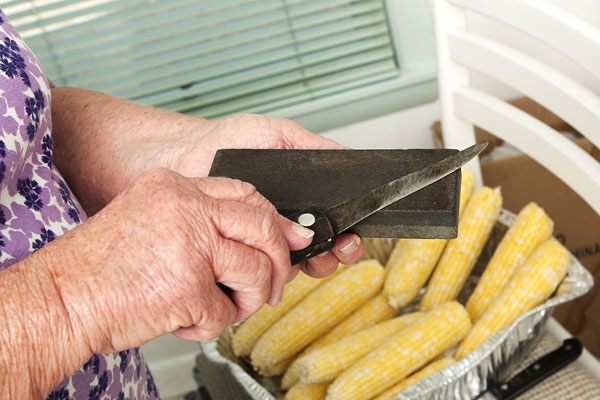
The whetstone she’s carried for over 40 years.
“I’ve been using this knife for nearly 30 years,” Alice says, holding it up for me to inspect its simple wood handle and less than elegant-looking blade. “A friend of mine made it from the blade of an old saw mill.” To keep it’s edges refined and pristine, she uses a whetstone that she’s carried with her for over 40 years.
Alice says her daughter, Robbie, has mastered the technique and allegedly makes the best cream corn she herself has ever tasted. “Other people have said so, and I even say so. I’ve watched her and it seems we do the same exact thing but hers is just the best,” Alice concedes.
Until I taste Robbie’s corn, I will still have to say Alice’s is the best.
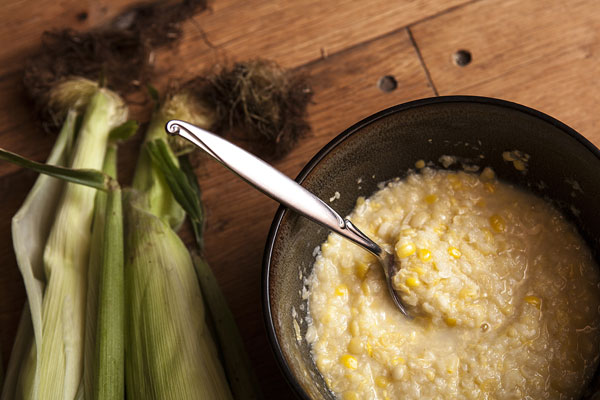
of cream style corn made with love.
________________________________________________________________________________
 Ronda Birtha is a freelance writer, photographer, and videographer residing in far, far western North Carolina. She has been an instructor for the Community Folklife Documentation Institute/NC Folklife Institute; and as Project Consultant for the Mountain Work: A Social Commentary documentary, partially funded by a grant from the NC Humanities Council.
Ronda Birtha is a freelance writer, photographer, and videographer residing in far, far western North Carolina. She has been an instructor for the Community Folklife Documentation Institute/NC Folklife Institute; and as Project Consultant for the Mountain Work: A Social Commentary documentary, partially funded by a grant from the NC Humanities Council.
Samples of her photography and videography can be seen at http://www.rondabirtha.com/.
Leave a Reply